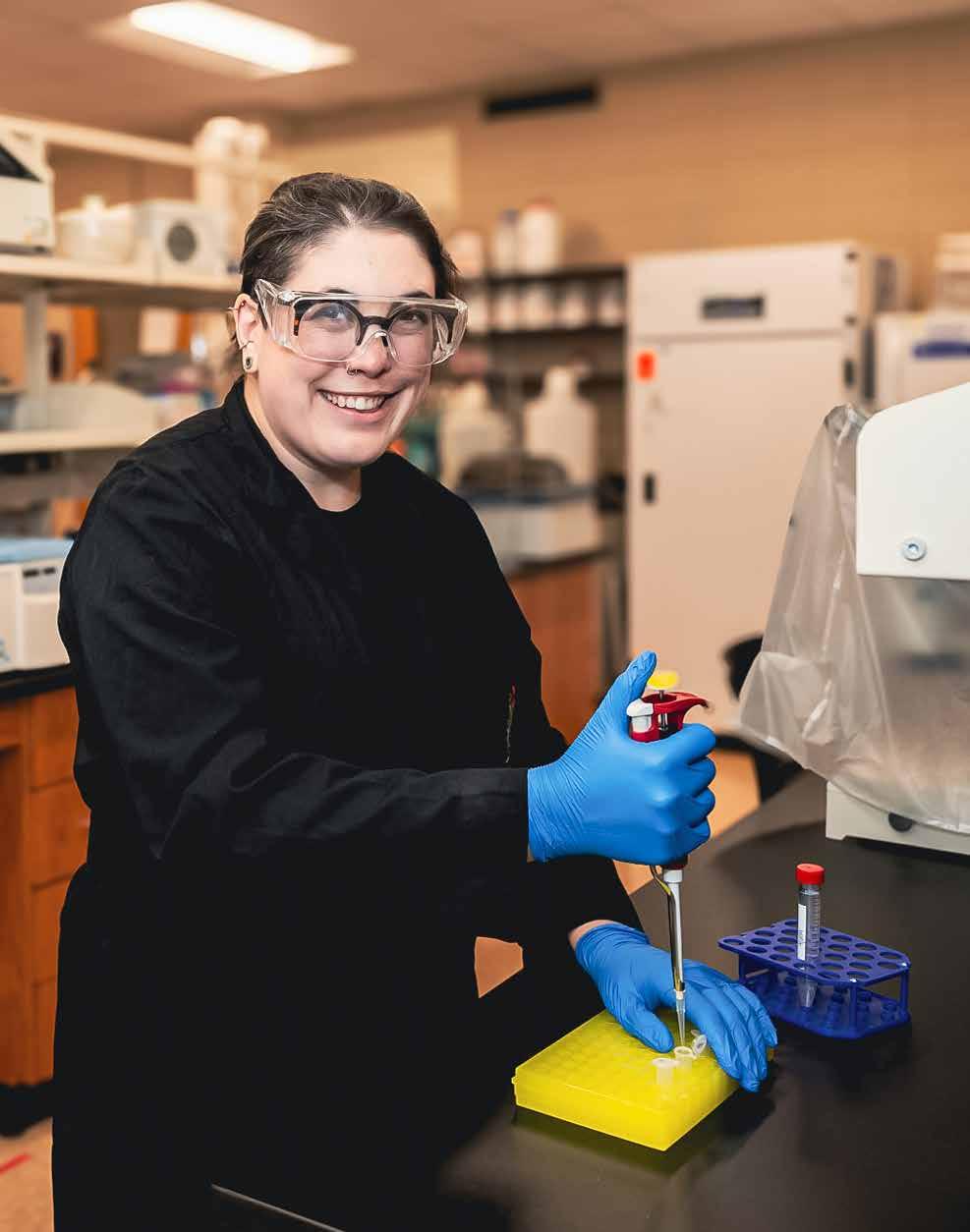
4 minute read
DECODING THE GENETIC MYSTERIES OF SOUTHERN GIANTS
By Sarah Nicholas, Photo by Jonah Holland
Intrigued by prehistoric giants lurking in southern swamps, Mississippi State University doctoral student Taylor Szasz Green is on a mission to decode the genetic secrets of alligators.
Her journey to computational biology began with a 2015 undergraduate degree in biomedical engineering from MSU, followed by research work at Washington University School of Medicine. It wasn’t until she returned to MSU in 2021 to pursue a Ph.D. that she discovered her true calling—investigating the evolution of genes regulating meiosis, a critical process in sexual reproduction.
“Explaining computational biology can be tricky because it’s such a broad field,” Szasz Green said. “In simple terms, it uses tools from statistics, math modeling and computer science to answer questions about biological systems. People often expect my work to be evenly split between biology and computation, but 90% of my time is spent staring at a computer. The rest is what I call ‘squishy science,’ or bench work.” diversity is present and examining runs of homozygosity—large chunks of identical sequences in the genome,” she said.
These measures help scientists understand how resilient alligators might be to new environmental threats and provide insight into their genetic history. Despite a large modern-day population, Szasz Green found alligators have higher levels of inbreeding compared to their American crocodile cousins.
“While they have more genetic diversity than we initially thought, it’s still quite low overall,” Szasz Green said. “This lack of diversity could make it harder for them to adapt to new challenges, but their family survived the extinction of the dinosaurs, so I remain hopeful.”
Szasz Green’s passion for computational biology was sparked during her time at Washington University, where she studied genetic mutations affecting children with bacterial infections. This experience inspired her to apply computational techniques to various scientific questions, ultimately leading her to focus on alligator genetics.
“Alligators were a natural fit for me,” Szasz Green said. “They were once on the endangered species list due to habitat destruction and overhunting, but what intrigued me was whether their slow evolutionary rate would impact their ability to recover from low population numbers.”
Her research delves into the genetic diversity of alligators, exploring whether inbreeding could pose a problem as their populations rebound.
“I’m looking at genomes to see how much
One of the most rewarding aspects of her research has been the interactions with local Mississippi alligator hunters. “I was privileged to be able to get on the water with them and ask a lot of questions about their methods and hunting history,” she said. “It’s one thing to adore alligators and watch them from a distance, but it’s completely different to be on their home turf, talking to people who had been working with them for decades. It really deepened my connection to the alligators, but also to other people that respect and appreciate them.”
In addition to her research, Szasz Green has received several honors during her time at MSU. In 2022, she was awarded Honorable Mention for the National Science Foundation’s Graduate Research Fellowships Program. Her work also has been featured in Sigma Aldrich’s Next Great Impossible campaign, highlighting her innovative contributions to science.
“Biology is so much more than just a path to medical school. It’s for problem-solvers and creative thinkers,” she said. “The skills you gain are highly transferable—you can become a patent lawyer, software engineer and so much more.” u is turning curiosity into discovery at MSU, conducting hands-on research that blends chemistry, engineering and sustainability to create real-world solutions. computational biology can be tricky because it’s such a broad field. In simple terms, it uses tools from statistics, math modeling and computer science to answer questions about biological systems.”

– TAYLOR SZASZ GREEN









